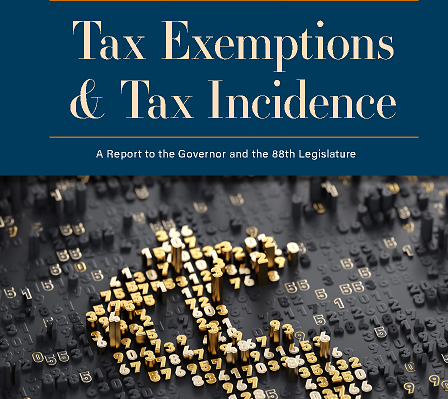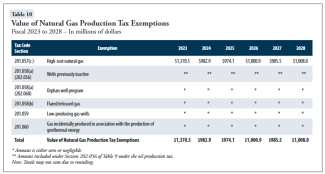Tax breaks to natural gas in Texas surge to $1.4 billion in 2023 update
Last October, I wrote about the way that arcane statutory language on what tax breaks needed to be reported in Texas resulted in the largest tax subsidy to oil and gas in the state not being reported at all. Specifically, if a particular tax does not comprise 5% or more of the state's revenues, exemptions from that tax don't need to show up in the biennial Tax Exemptions & Tax Incidence Report. This exemption applies even if the revenue loss from the provision to the state Treasury is tens or hundreds of millions of dollars per year.
Oil and gas are often co-produced at the same wells, and tax breaks to one are often applied to the other in a similar way. Most states report the joint revenue loss from the tax break flowing to both fuels. Many states also focus on the scale of the revenue loss rather than the scale of the tax base in deciding what must be reported in their tax expenditure budget. The magnitude screen seems a good one, since if a provision is costing taxpayers $50 or $100 million per year it is reasonable to assume that state taxpayers would want to know about it.
In Texas, however, the oil and gas rules are in separate sections of the statutes. As a result, the reporting threshold for the oil production tax and the natural gas production tax are calculated separately. The result in many years has been to hide the very substantial revenue losses resulting from the natural gas subsidy.
The good news is that the latest version of the Tax Exemptions & Incident report, released in February 2023, does include high cost natural gas. Table 10 from that report is shown here.
It is likely that this change in reporting was the result of surging natural gas prices during 2022 driving the associated production taxes to exceed the 5% reporting threshold, rather than a recognition that regardless of that threshold the provision was still causing large enough losses that transparency should be provided. Earth Track has requested clarification on this from the Comptroller's office.
However, because eligibility for the high-cost natural gas is driven primarily by technical attributes of the wells and not on whether the field is actually profitable, we see surging revenue losses to the state at the same time profits to oil and gas reached their highest levels in years. This is a particularly poor incentive structure.
And the cost to Texas taxpayers has been huge. The provision was expected to reduce production taxes on natural gas by nearly $1.4 billion in 2023, and $6.3 billion between 2023 and 2028. This adds to the $11.6 billion in subsidies to these gas producers between 2009 and 2022.
It is time to end this subsidy; for specific recommendations, see my October post.



